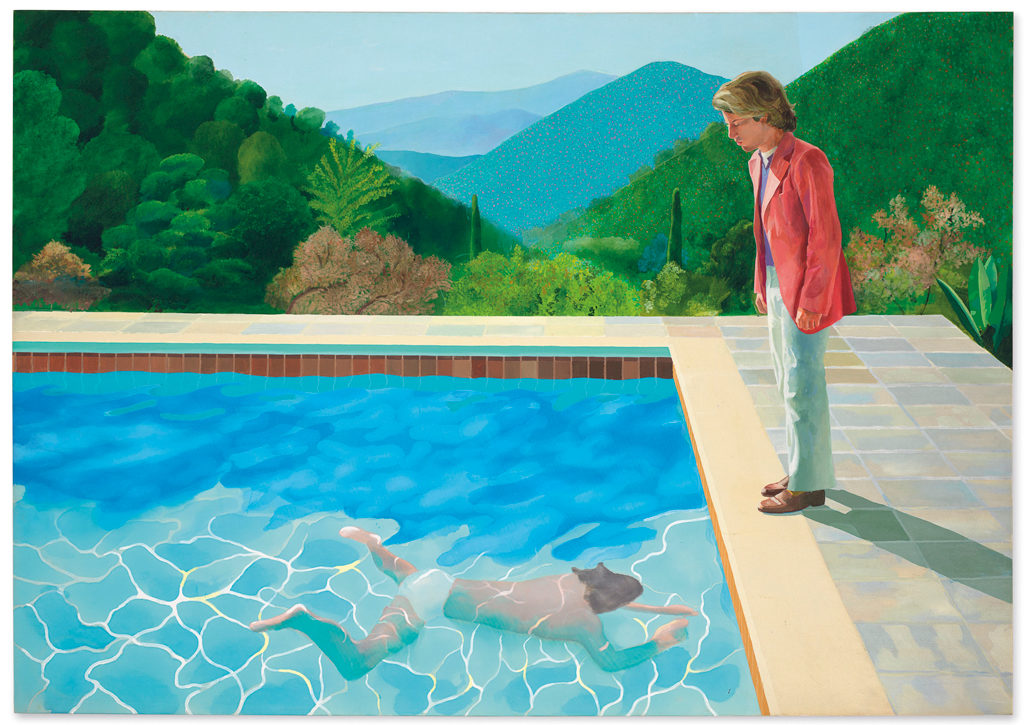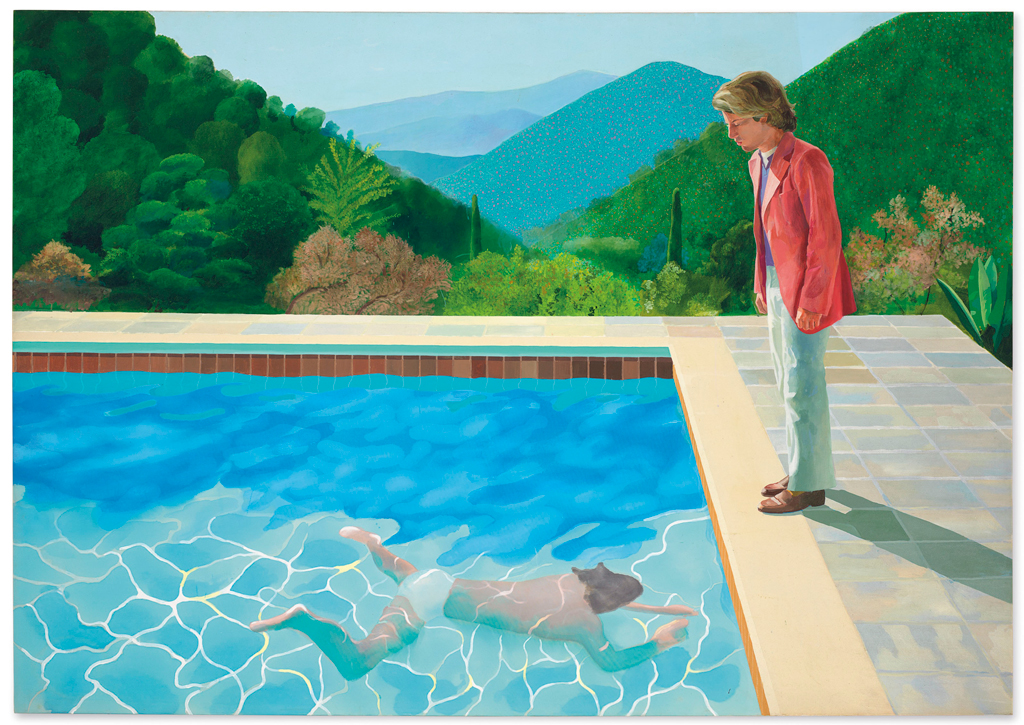[ad_1]

It all went swimmingly: David Hockney’s Portrait of an Artist (Pool with Two Figures), 1972, sold for $90.3 million on the block tonight at Christie’s in New York.
CHRISTIE’S IMAGES LTD. 2018
Tonight in a crowded salesroom at Christie’s Rockefeller Center headquarters in New York, David Hockney’s famed 1972 painting Portrait of an Artist (Pool with Two Figures) sold for $90.3 million after nine minutes of bidding, becoming the most expensive work by a living artist ever sold at auction.
The winner was bidding by telephone, and was represented in the room by Christie’s U.S. chairman Marc Porter.
The Hockney, which measures 7 feet by 10 feet, had been tagged with an on-request estimate said to be in the region of $80 million, and was offered at Christie’s postwar and contemporary art evening sale without a reserve, meaning that the house was free to sell it at any price. (Typically, an undisclosed minimum price is agreed to by the seller.)
The previous top mark for a work by a living artist at auction was held by Jeff Koons, who notched the record in 2013, when the orange version of his “Balloon Dog” sculpture went for $58.4 million at Christie’s.
The Hockney’s seller tonight was Joe Lewis, the British billionaire known for making big bets on both currency and art. He acquired the majestic Hockney in 1995 from another major-league collector, the American entertainment billionaire David Geffen, who had held it since 1983.
The work, which was first sold by André Emmerich Gallery in New York, had appeared in Hockney’s recent retrospective, which had triumphant stands at Tate Britain, the Centre Pompidou, and the Metropolitan Museum of Art over the course of 2017 and 2018. Christie’s pulled out all the stops promoting the work, publishing a special catalogue for it that runs to more than 100 pages, and giving it pride of place at Rock Center during its pre-auction previews.
Lewis is known for keeping a low profile, but is believed to have been part of George Soros’s effort in 1992 to bet against the British pound, a risky move that resulted in large windfalls for both investors.
In 2016, he was the subject of a report in the Guardian, spurred on by documents from the leaked Panama Papers, that suggested he quietly bought much of the storied collection of contemporary art assembled by Victor and Sally Ganz before it was sold at Christie’s in 1997, and then made a tidy profit when those works soared on the auction block.
Here’s a full report from the Christie’s auction, the final big-ticket sale during an action-packed market week in Manhattan.
[ad_2]
Source link

